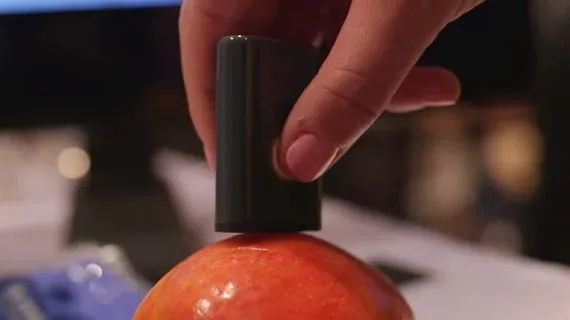Imagine taking out a smart device from your pocket, pointing it towards the food and getting its exact formation and nutritional values. With food, scanner it is possible.
You can count its calories. You can know its ingredients and components through which it is made. It might be possible to know whether the food is spoiled or contaminated. Doesn’t that sound exciting?
Food scanners are the small hand-held devices that analyze the composition of the food with a simple point.
Applications:
Preventing Allergic Reactions:
Food scanners prevent allergic reactions. They do have a lot of potential for prevention. Therefore, these scanners can help save millions of people from different allergies.
According to Food Allergy Research and Education, 1 in 13 children in the US have food allergies. About 30% of allergies are for more than one food. Every year almost 200,000 people in the US get severe allergies due to contaminated food. The patients are sent to the emergency rooms. The stats tell that’s one person every three minutes.
It’s impossible to avoid them altogether. Because there is no cure for them except to avoid that food.
Eat what’s right for you:
Even when the food is not polluted or infected, the scanner can be very useful. It can tell you the calories in the food.
In case you are trying to lose weight, you would want to know the fats and calories; it’s really handy. You may also want to know which food is good for you or and which is not.
With the help of the molecular food scanner, you can get accurate information about the content of the food. If it’s not healthy then you can stop eating it.
Need to use:
A food scanner is a handy device as it can save you from bigger problems.
Some of the food scanners are:
Tellspecopedia:
- Search food ingredients or components and acquire their action on health.
- It will make decisions whether should buy the food or not.
Gluten Flour Adulteration:
- It will test the gluten flour with urea or melamine.
- It will make a decision about gluten flour.
FishQC and Fraud:
- It will test the freshness and quality of the fish.
- Test for weight fraud by measuring the excess water in frozen fish.
- It will reduce the cost of the fraud fish.
- It will create a report on the work.
- Accesses the report history.
FruitQC:
- Test the freshness, ripeness, and quality of the fruits.
- Test the flavor of the fruits.
- It makes a decision whether the fruit is good to buy.
- Reduce the cost of the fruit if it’s impure.
- Create a report of the work done.
- Access the report history.
Internet improves your nutrition
Let’s say you just found out that the food you’re about to eat contains germs. Won’t it change your mind? It will definitely. Suppose a person has diabetes; if he uses a food scanner and he comes to know that the food has plenty of sugar content, he’ll definitely not have it. This is how handy can this food scanner be!
Food scanners need to progressively move from raw data to automated analysis.
Food scanner should accurately determine:
Food scanner should accurately determine the following things:
- Ingredients.
- Components.
- Dietary choices.
- Genomics background.
Benefits of food scanner:
- Satisfactory for low moisture foods. Foods containing volatile oils such as herbs and spices.
- Cheap.
- Easy to operate.
Drawbacks of food scanner:
- Destructive.
- Time-consuming.
- Involve flammable solvent.
- Not applicable to some types of food.
How do these scanners work?
The scanners use the light, which is refracted from an object to create a specific optical fingerprint, which is then correlated to a predetermined set of recognized items. Scanners are also able to tell the characteristics of a particular item, like how much vitamin C a given orange contains.
Future with Food Scanners:
Scientists and medical professionals talk about nutrigenomics. It is the effect of nutrition on the metabolic pathways. By understanding this concept, we can know in a more personalized manner what should be taken in what quantity. This for sure in turn will have a remarkable effect on overall health too. For example, some people are more sensitive to caffeine consumption than others. Likewise, some people metabolize alcohol slowly while others can metabolize it faster. Therefore, depending on their DNA status, the trend in nutrigenomics, one can know the nutrients in the food scanner and hence can modify their diet.
Diabetic patients can certainly know the number of carbohydrates in food. This can help them avoid carbohydrate-rich food, which will disturb the diabetic control. People with allergies can avoid dangerous foods with the help of these scanners.
Despite the many benefits the food scanner offers there are limitations to its utility. The biggest challenge faced by them is the cost. Yes, they are pricey. Another limitation is its size. They need to be hand-held.
Future technology may also be able to tell the type of food. For example, whether the meat is beef or mutton.
The work is still under the pipeline!

Share Your Thoughts